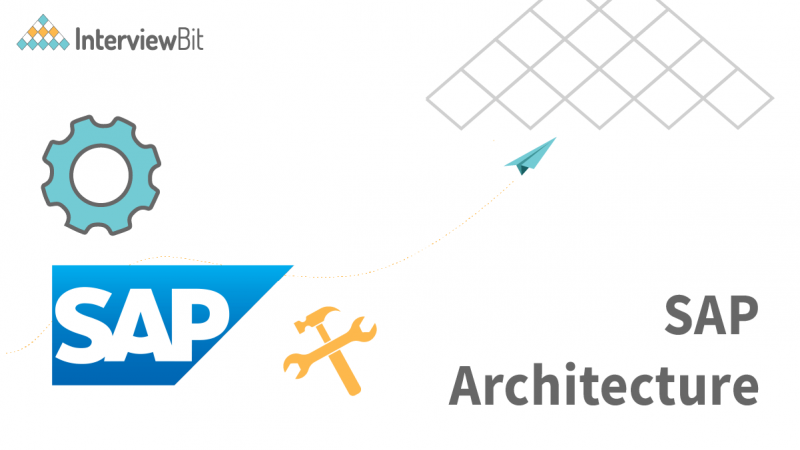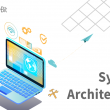SAP architecture is a set of principles, patterns and best practices that outline the architecture of an organization’s SAP environment. By using it, organizations can build a more secure and reliable platform for running business processes across their organization. SAP is a software-as-a-service solution, which means it’s cloud-based. This has implications for your SAP architecture. Your users will be accessing SAP via a web browser; they won’t be installing software on their desktops and laptops like they would with desktop applications.
That means you need to think about your SAP architecture beyond the technical components necessary to run SAP itself. You need to think about how to structure your system so that it is easily managed, supported and updated over time while remaining secure and reliable at the same time. This article covers everything you need to know about SAP architecture
What is SAP?
SAP is a global leader in providing software solutions that enable organizations to process data efficiently and communicate information effectively. SAP was founded in 1972 and has grown from a small, five-person program development firm to a multinational corporation with more than 105,000 employees worldwide since then. Walldorf, Germany is SAP’s headquarters, where it’s run by more than 100,000 employees worldwide.
Confused about your next job?
SAP stands for “Systems Application Program.” The SAP acronym is a widely used shorthand term for software, computer programs, and applications that all fall under the umbrella of SAP systems.
Some examples of applications that fall under the SAP acronym are accounting software, inventory management software, database management software and web application software. To be more specific, SAP is a business-to-business (B2B) application development platform which allows organizations to manage and optimize their business processes in order to increase productivity and profitability. By providing organizations with real-time access to critical information from multiple sources, such as financial data, inventory records and customer profiles, SAP systems enable them to effectively manage their operations. By streamlining business processes and reducing operational costs, SAP systems can help companies achieve greater growth and profitability.
SAP 3 Tier Architecture: Different SAP Layers
The SAP System Architecture includes Presentation, Application, and Database layers. Each of these programmes operates on its own. In contrast, MiniSAP has all the components in one machine. We may distribute the whole system across diverse machines or it may also be on one machine like ours. The database and the application server can be on the same machine if we want to get an idea of the SAP system architecture in greater depth. In addition to these application servers, other applications are run on separate machines. To better grasp the SAP architecture, let’s look at these three elements in more detail.
The SAP System Architecture consists of the Presentation, Application, and Database layers.
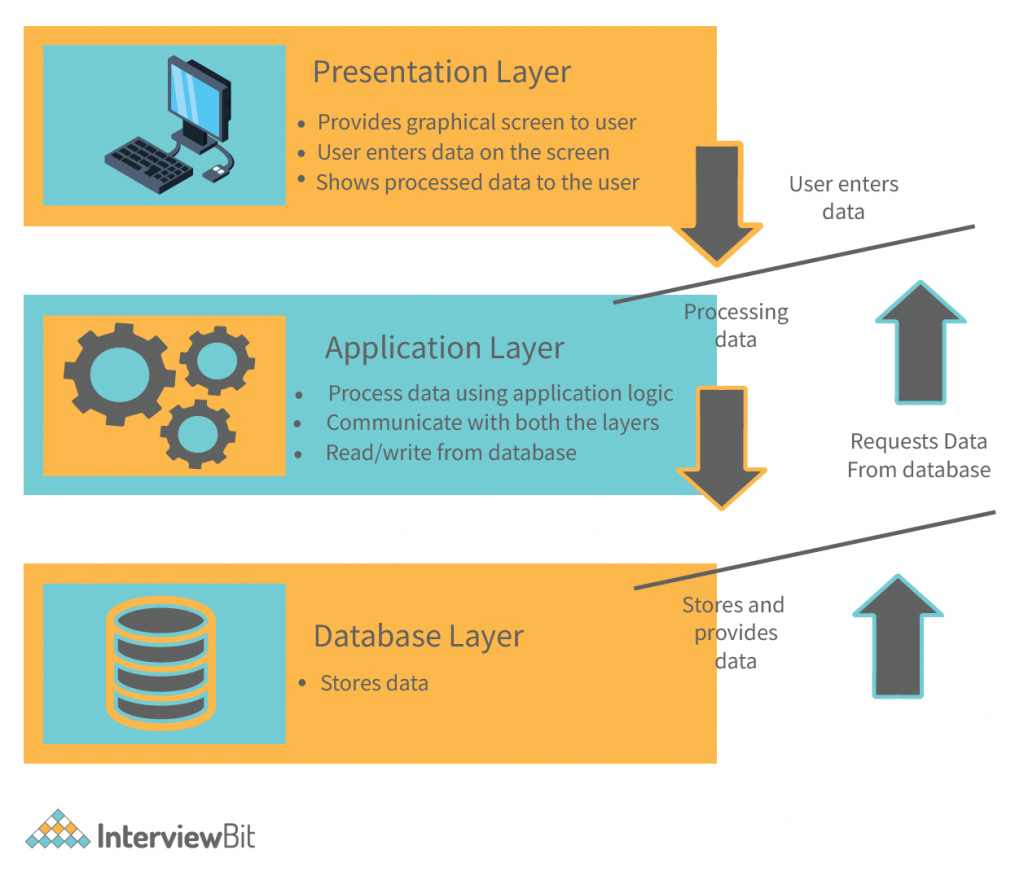
1. Presentation Layer
- The presentation layer is responsible for the user experience and for making sure that the SAP system is responsive and easy to interact with.
- The presentation layer does not have any knowledge of the underlying data stored in the data layer.
- The data layer holds all the data that is being stored in the SAP system. The data layer is the realm where all the business rules and processes take place.
- The data layer exists between the presentation layer and the application server.
- When you connect to the application server and start to do work, the application server, which is the realm where all the logic happens, knows nothing about the data layer.
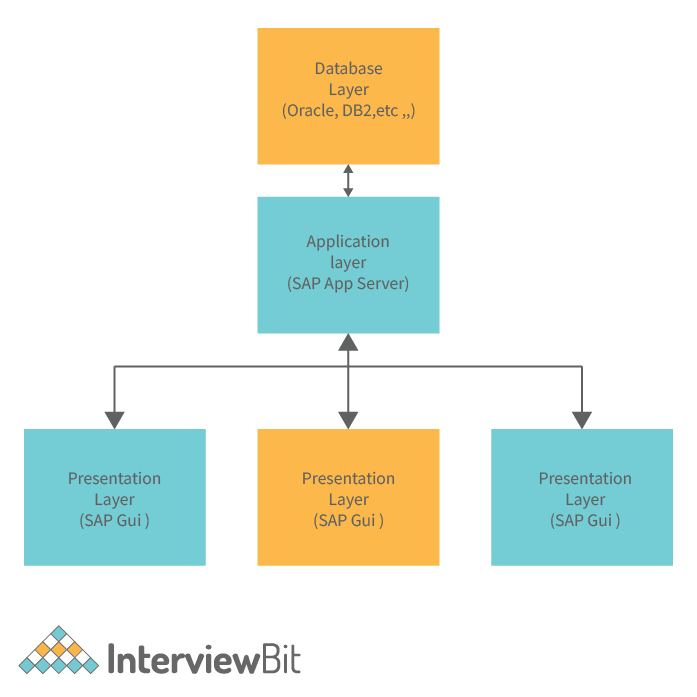
2. Application Layer
- This layer of the architecture is responsible for receiving and parsing data before it can be used by any part of the organization.
- This layer is also responsible for providing data within the correct format for each application.
- The last responsibility of the application layer is to ensure that the data is secure before it is sent to the next layer.
- This layer of architecture is a critical component to the success of your digital transformation. The work process must be carried out by a user who is registered in the system. For this reason, we define the work process as a user of the system. The work process will register itself in the database, and when it is required to create a new record in the system, this is done by the work process. The work process can be created by the system administrator through the SAP system. In the case of the SAP system, this can be done by setting the role of the user to a specific value. What happens when you do this is that the SAP system will create a new user in the database system. This user will register itself in the database, and when the system needs to create a new record, the user can do this. The user will create the work process, and when the system requires the work process to create a new record, the user will create the process.
3. Database Layer
- The system architecture is what defines how your SAP system is set up.
- If you were setting up a new company, you would choose a system architecture based on the type of business you want to start.
- For example, a manufacturer of motorcycles and scooters would be best served by a system architecture that focuses on production and inventory. A hotel would do best with a system architecture that focuses on customer relations. Once you have chosen the setting for your new company, you need to choose the SAP system architecture. The application and database layers receive information about actions performed on the presentation layer and then query the results. As a result, you can see the results of processing on the presentation layer.
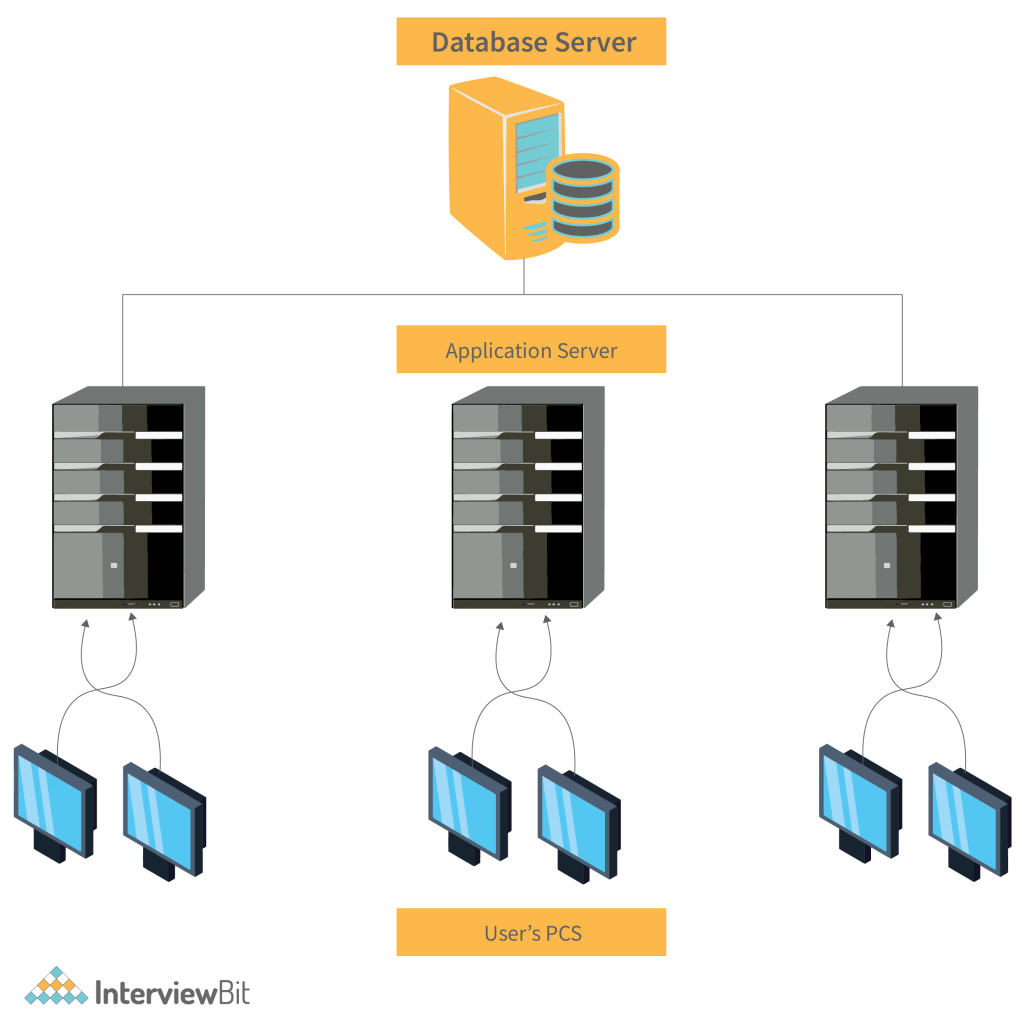
SAP Architecture Components
The SAP R/3 3-tier Architecture is a popular application server topology for developing large-scale enterprise applications. With the increased use of web-based technologies and the ever-increasing importance of user experience, application servers are being replaced by web-based applications. However, there are certain situations where the usage of web-based applications is not possible, due to the size of the system, regulatory compliance, or other business reasons. In such cases, the usage of 3-tier application servers is unavoidable. The most common application server topology is the SAP R/3 3-tier Architecture.
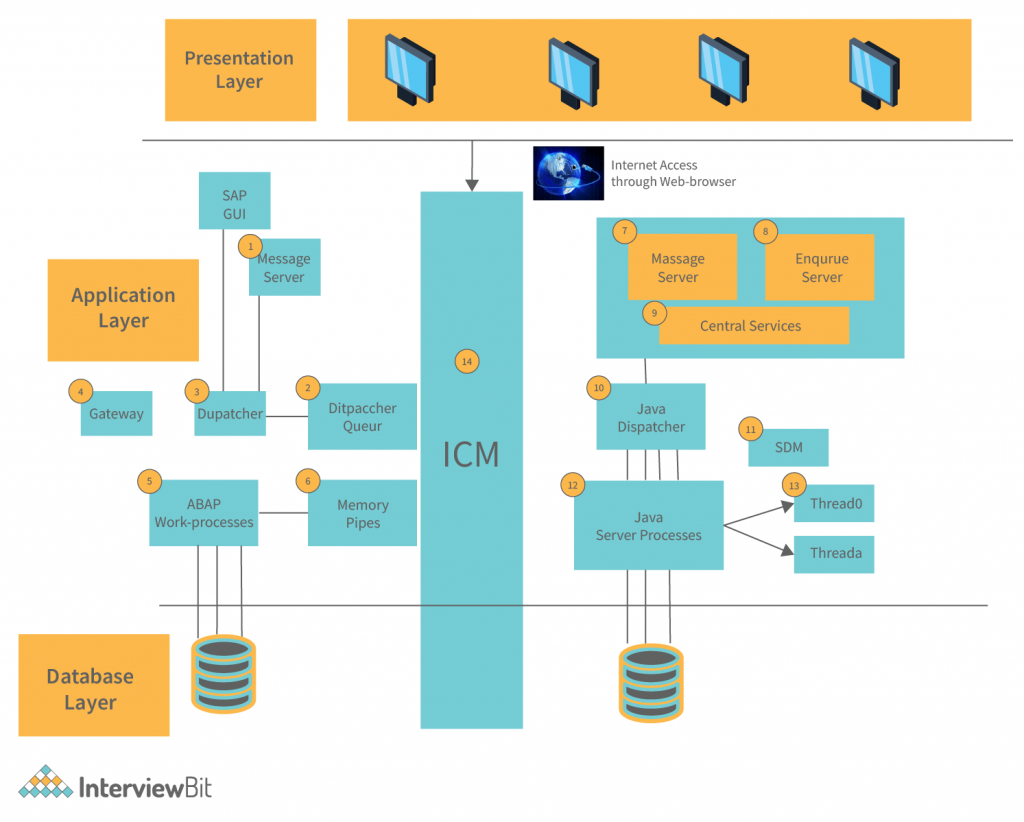
- The role of the Message Server is to handle communication between ABAP Dispatchers that are distributed across the system.
- In this Dispatcher queue, process work of several different types is stored.
- Work processes are allocated by the dispatcher.
- Gateway provides access between SAP systems and external systems.
- Each R/3 dialog step is separately executed by ABAP-Work processes.
The following describes the types of work processes:
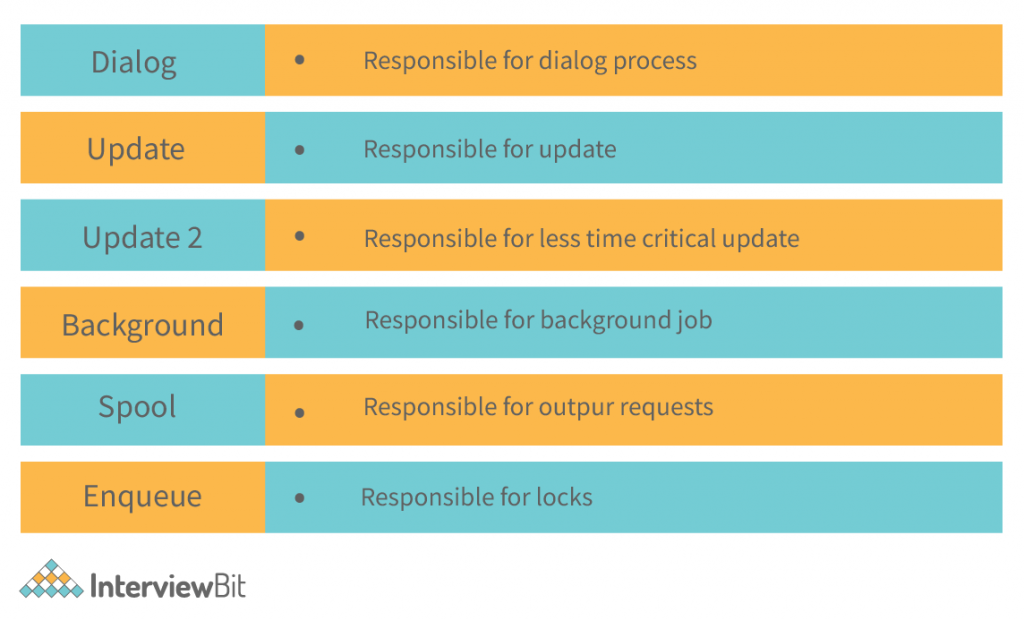
- An ICM work process can communicate with an ABAP work process via a memory pipe.
- The Java dispatcher and server processes are handled by the Message Server. Within the Java runtime environment, the Message Server enables communication.
- A server process is configured by a Java application program to handle logical locks. The queue server handles them.
- The central services are used to manage locks and transmit messages and data when working in a Java cluster. Java clusters are sets of cooperating processes that create a dependable system. A group of resources, such as memory, work processes, and so on, is known as an instance.
- The Dispatcher handles the incoming client requests and dispatches them to the correct server process.
- To install J2EE components using SDM, you must first download and install Software Deployment Manager.
- A high quantity of requests can be handled by a Java Server Process.
- Threading refers to the method of processing multiple items at once in the background.
- SAP can be accessed from a browser by entering the system’s URL. Because of this, ICM can also be used for communication.
When using the ABAP and Java systems, we use another component called a JCO to handle communication with the ABAP dispatchers. ABP+Java uses Java dispatchers to handle communication.
How Does the SAP Process Work?
- The SAP Logon process is the first step of the SAP authorization process. This is a simple process which involves entering the identification number that you were assigned when you created an account with SAP.
- After this, you will be asked to provide your SAP password.
- After you successfully enter your SAP password, you will be sent a confirmation message confirming your successful logon. From here, you will be able to access the main menu of SAP.
Although the process may seem simple at first glance, it can sometimes be challenging to perform correctly. Therefore, it is recommended that users practice logging in before conducting business-critical activities such as signing contracts or performing transactions.
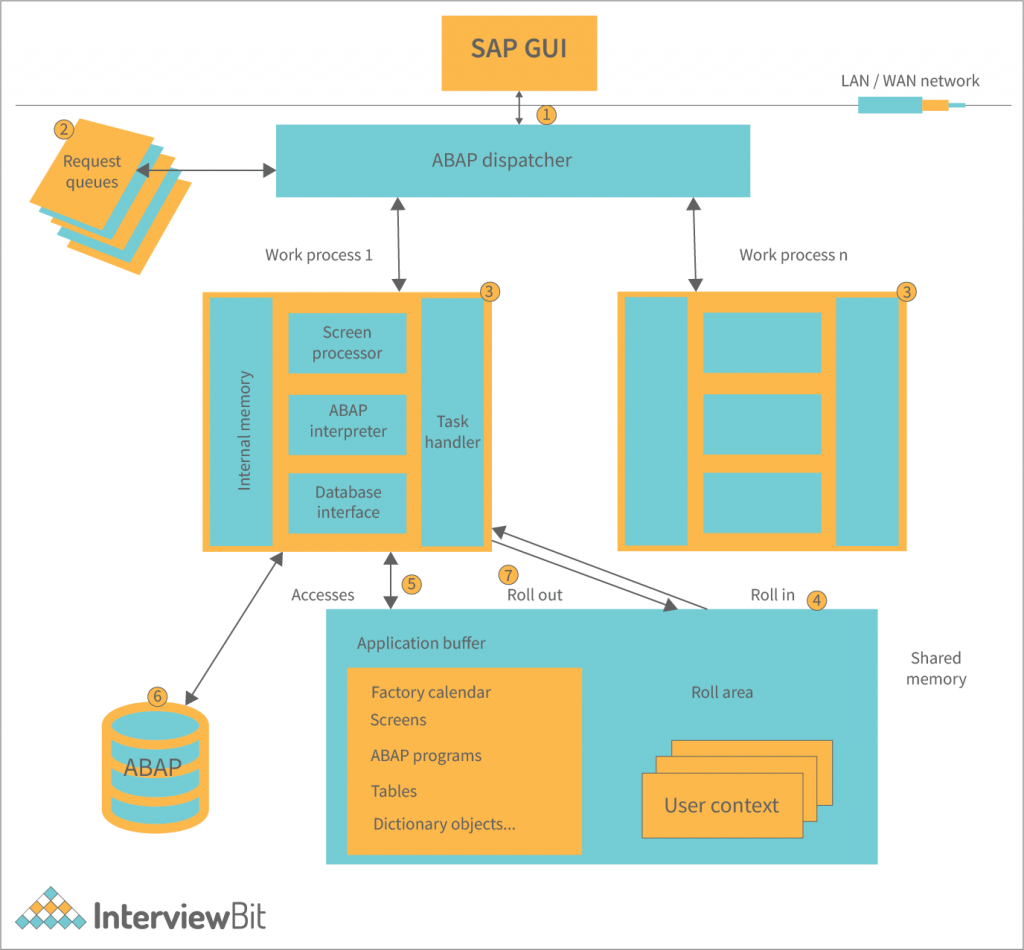
- The Dispatcher listens to user actions such as clicks on links or forms and forwards them to corresponding actions. When the action receives the request, it handles the request and returns the response to the Dispatcher. The Dispatcher forwards the response to the system.
- Once a process is assigned, the dispatcher will check if the resource is available in the Service Request Pool. If it is not, the dispatcher will go ahead and start the process and assign another work process when the work process is available. If the resource is available in the Service Request Pool, the dispatcher will find another process and assign that one and so on.
- The work process is responsible for putting work into the system and delegating it to other processes. Processes can be divided into two categories depending on their priority. These are critical processes which need to be executed immediately. These processes are called high priority. Critical processes and other high-priority processes can be assigned to users. Thus, depending upon user request work process is assigned.
- In the process of work, if a user does some changes in the process and the process is not completed, then the User will get an alert message. In the case of the dialogue step, when a user authorizes the work process, then shared memory will be checked. If any other user’s data is present in shared memory then the process will be stopped and an alert will be displayed.
- Another work process is reading. If there is no data in the buffer then data has to be retrieved from the database to get a response. And this process is called reading. If there is data in the buffer then it has to be removed. And this process is called kill. This process increases the performance of the system. It is very important to keep these work processes in mind while designing your application.
- A dispatcher is a class that receives requests from the GUI and sends the requests to the server. The server receives the request and executes the query and returns the result to the dispatcher which then updates the GUI. A dispatcher can be registered at the startup of the application and it can be unregistered at any time to stop the dispatching. By using this approach, the data is synchronized between the server and the GUI.
- If the shared data is not being used by any other user, it will eventually be evicted from shared memory and the system will have less memory to service other workloads. It is important to monitor data in shared memory for signs of stagnation, because once data is in shared memory it cannot be purged.
Conclusion
SAP architecture is the overall structure of an organization’s IT systems. It describes how these systems are put together, what roles they play, and how they relate to one another. One key goal of SAP architecture is to create a stable foundation that can support future growth. Following the right design patterns can help ensure this. One important aspect of SAP architecture is componentization. Each component should do one thing well, and it should be easy to replace or upgrade if necessary. Ideally, each component should also have a clear interface so that other components can easily interact with it.
When designing an SAP architecture, focus on creating a cohesive whole that works together as a cohesive whole. Another key goal of SAP architecture is to ensure that it scales with the business. As the business grows, so does the need for effective IT solutions. Scaling up or down as needed should be part of the plan from the beginning.
Finally, remember that SAP architecture is more than just technology. It’s about ensuring that all aspects of IT are working together in harmony to deliver maximum value for customers and shareholders alike.


